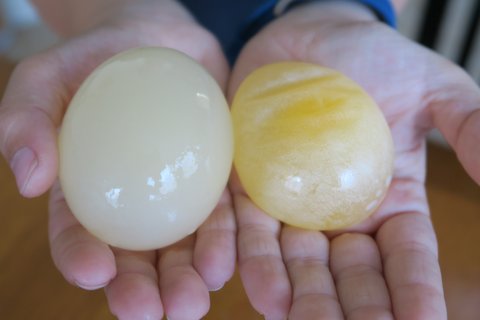
How to Make an Eggshell Disappear Experiment
It’s a near-universal truth: kids love hands-on science experiments! This fun and easy kitchen experiment answers the question, “Can you peel a raw egg?” or, “How do you make an eggshell disappear?” It takes a few days to see the full results, so be sure your young scientists understand that science experiments can yield immediate results, or stretch over hours, days, months or even years!
You will need:
- two eggs
- two transparent containers
- white vinegar
- slotted spoon
- corn syrup
- water
Day 1:
Put two eggs into one transparent container. Make sure the eggs are not touching each other. Pour enough vinegar into the container to completely cover the eggs.
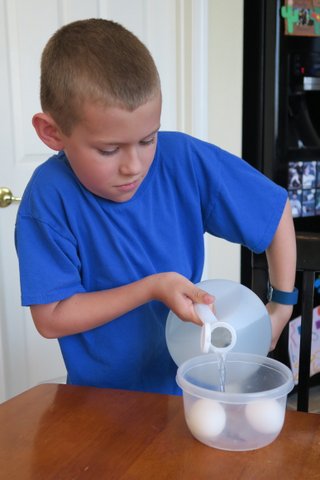
You’ll see bubbles forming right away!
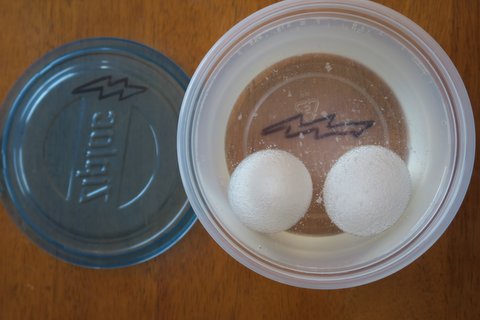
What’s happening? Vinegar is an acid. Eggshells are made of calcium carbonate, which is a base. When the vinegar comes in contact with the eggshells, it breaks apart the calcium carbonate into calcium and carbon dioxide, which are the bubbles that you see.
Watch for few minutes, then cover the container and put it in the refrigerator for 24 hours.
Day 2:
Remove the container from the refrigerator. You’ll notice right away that something has happened!
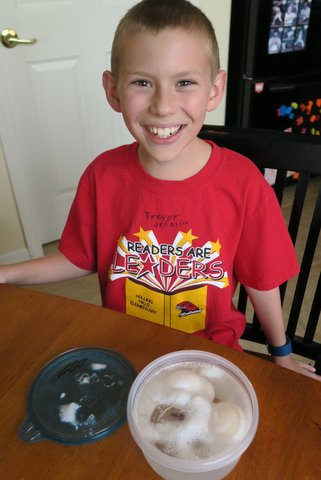
Use the slotted spoon to remove the eggs from the container. The shells are completely gone, but the membranes are still intact!
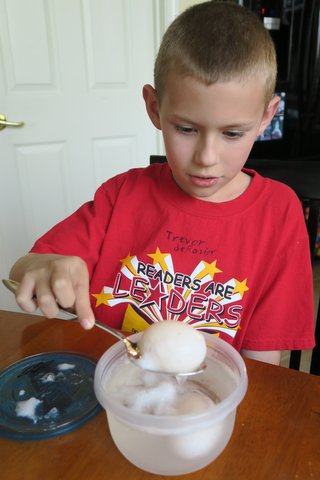
The foam that you see is the calcium from the eggshells. Gently rinse the eggs and the container. Try holding the eggs in your hands. Do they feel different than before? In what way? What happens when you gently squeeze them? Hold them up to the light. Can you see the yolks? What else do you observe?
Now that the eggshells are gone, we’re going to see how the membrane functions. Put each egg into one of the two containers. Fill one container with water and the other with corn syrup. You’ll notice one difference right away. The egg that is in water sinks, while the egg in the corn syrup floats. This is because the two liquids have different densities.
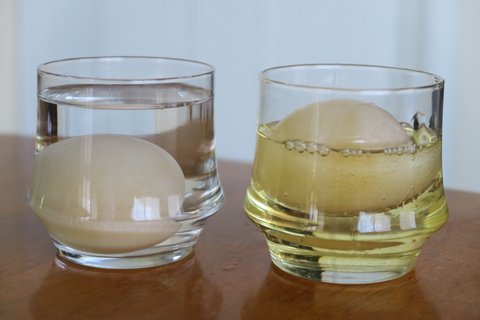
Put the two containers into the refrigerator for 24 hours.
Day 3:
Remove the containers from the refrigerator. The eggs looked identical before, but now they are very different from each other! Use the slotted spoon to lift each egg out. The egg in water is firm and plump, while the egg in corn syrup is shriveled and limp. Why?
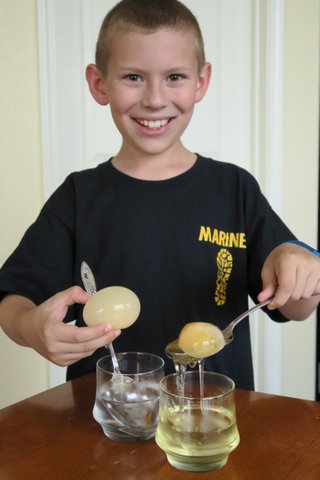
The egg is surrounded by a membrane that is selectively permeable. This means that it lets some molecules pass through and blocks others. Water can move through easily, but larger sugar molecules (like the ones in corn syrup) can’t pass through. The egg in water firms and plumps as water moves through the membrane. The egg in corn syrup shrivels as the water in the egg white passes out the membrane and into the corn syrup.
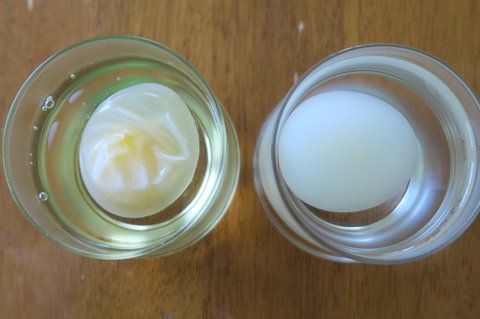
Carefully rinse the egg that was in corn syrup. Hold the two eggs side-by-side in your hands to make further comparisons.

Place the eggs back together in one container, fill it with water, and return them to the refrigerator for another 24 hours.
Day 4:
The eggs look similar again! The membrane of the shriveled egg allowed water to pass in, plumping it up to match the other egg. Let’s investigate the membrane further. Get a large bowl and place an egg inside. Poke, tear, or cut the membrane to let out the egg white and yolk. Or, if you’re really brave, heat some butter in a frying pan and try what we did!
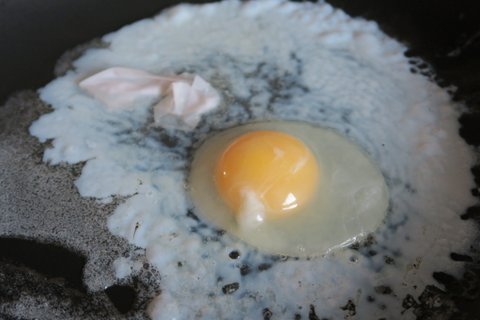
The yolk and some of the egg white looks just like it would from a freshly cracked egg. But you can also see quite a bit of watery whites, as well as the torn membrane. We removed the membrane and continued cooking the egg completely. Then we tentatively took a bite… Yuck! The egg tastes strongly of vinegar. Can you figure out why? Just like water, vinegar was able to pass through the egg’s membrane after it dissolved the shell.
Kitchen science is so much fun!
